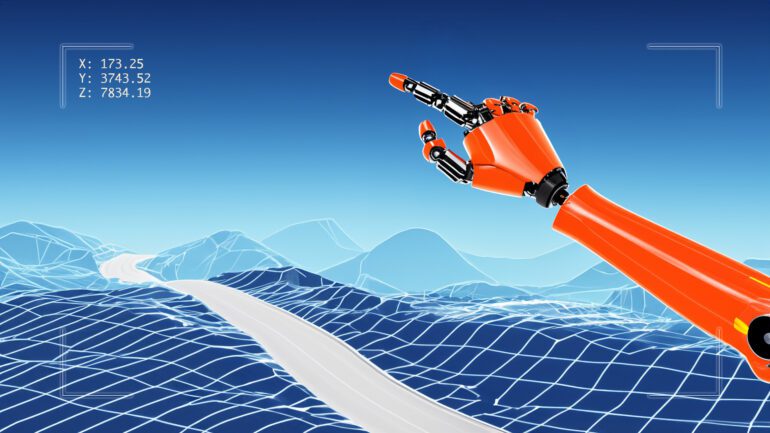TL;DR:
- ASU’s Ying-Cheng Lai leads groundbreaking research in robot programming using reservoir computing.
- Robots can now adapt and change their trajectories with partial knowledge of their environment.
- Traditional methods like linear quadratic tracking require extensive knowledge and are less adaptable.
- Potential applications include autonomous drones, human-assisting devices, and precision tools.
- Researchers plan to extend this technology to control robots in three-dimensional space and integrate model predictive control.
Main AI News:
In the realm of science fiction, robots move with unparalleled agility, deftly navigating through obstacles and responding to dynamic challenges. However, in reality, we are yet to witness such seamless robot movements. Yet, the landscape is changing, and it’s thanks to innovators like Ying-Cheng Lai, an esteemed ASU Regents Professor of electrical engineering at the Ira A. Fulton Schools of Engineering, Arizona State University. Together with his doctoral students and collaborators from the U.S. Army DEVCOM Army Research Laboratory, Lai is pushing the boundaries of robot programming.
In their quest to bring robots closer to the realm of cinematic fantasies, Lai’s team has harnessed the power of reservoir computing, a subtype of machine learning. They have successfully programmed a robot to manipulate two arms within a 2D plane, all in a simulated computer environment. What makes this achievement remarkable is the robot’s ability to alter its course along predefined paths, all while having only partial knowledge of its surroundings.
“The innovative aspect of this approach lies in its capacity to operate effectively with only partial observation of the state of the system, in contrast to the traditional requirement of comprehensive knowledge about the robot and its environment,” Lai states. “It is akin to attempting to solve a jigsaw puzzle by focusing solely on a few pieces rather than the complete image.”
Conventionally, robots’ movements are programmed using mathematical function-based machine learning methods like linear quadratic tracking. However, this approach necessitates exhaustive knowledge of both the robot and its surroundings, leading to time-consuming recalibrations and limiting the robot’s adaptability in real-world scenarios.
Lai’s groundbreaking research, supported by the U.S. Air Force Office of Scientific Research and the U.S. Army Research Office, has far-reaching implications. It could pave the way for autonomous drones, advanced human-assisting devices, precision laser cutting tools, and more. The findings have been published in the esteemed science journal Nature Communications in their paper titled “Model-free tracking control of complex dynamical trajectories with machine learning.”
Reshaping Robot Programming: A Paradigm Shift
Traditional robot programming, like linear quadratic tracking, is akin to teaching tricks to a pet dog, relying on a singular treat for each trick. Such an approach has inherent limitations due to its lack of flexibility. Recognizing these shortcomings, Lai’s team embarked on a journey to leverage partial observations of the system’s state, essentially allowing the robot to learn from its past experiences.
Their chosen technique, reservoir computing, stood out for its ability to instill memory, providing the system with learning capabilities. Reservoir computing enables the system to correlate inputs and outputs, effectively analyzing the most efficient outputs to achieve the desired programming goal. Lai likens reservoir computing to the intricate interaction of ripples in a pond when stones are thrown into it.
“If we observe the ripples carefully, we may be able to tell where and how hard the stones were thrown, even without seeing the actual throwing process,” Lai explains. “We can relate the pond to the ‘reservoir’ or memory in reservoir computing, where the dynamic system reacts to and interprets inputs, similar to the stones thrown into the pond. The way the reservoir reacts to these inputs can be analyzed to make sense of the input or even predict future inputs.”
Reservoir computing’s adaptability aligns perfectly with Lai’s research objectives. With meticulous fine-tuning and extensive experimentation, the team achieved their goal of controlling two simulated robotic arms in various trajectories, with the added ability to switch paths seamlessly.
Empowering Future Innovators Through Cutting-Edge Research
For one of the paper’s primary authors, Zheng-Meng Zhai, this research represents a significant milestone in his doctoral journey. Zhai not only conducted the project’s computations and simulations but also drafted the paper summarizing the findings. This experience has not only enriched his understanding of advanced analytical techniques in nonlinear dynamics but has also inspired him to consider a potential career in academia.
Mohammadamin Moradi, the secondary author, contributed to every step of the project, leveraging his expertise in system control theory. He attributes the project’s success to ASU’s top-tier resources in robotics and machine learning, emphasizing the institution’s commitment to interdisciplinary research.
As the research team looks ahead, they plan to leverage ASU’s expertise in machine learning and robotics to further advance trajectory control for robots. The next frontier is conquering three-dimensional space, enabling robots, such as autonomous drones, to navigate both vertically and horizontally.
Additionally, the researchers are exploring the integration of model predictive control, a method that uses mathematical functions to optimize outcomes while considering resource constraints. This integration promises a harmonious blend of classical control theory and modern computational techniques, further propelling the field of robotics.
Conclusion:
The innovative robot programming methods developed by ASU’s Ying-Cheng Lai and his team, utilizing reservoir computing, mark a significant step towards more adaptable and efficient robots. This breakthrough has the potential to disrupt various markets, including autonomous drones, assistance devices, and precision manufacturing tools, by enabling robots to navigate complex environments with agility and ease. This innovation may usher in a new era of robotics with broad applications and transformative impacts on industries relying on automated systems.

